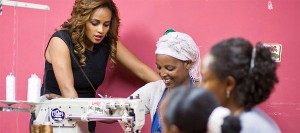When comparing Toms and SoleRebels, I am more drawn to the SoleRebels business model as opposed to Toms one-for-one model.
It is evident that Toms has become a well known shoe brand that is famous for its one-for-one business model. The one-for-one model means that for every shoe a consumer purchases, they will donate a pair of shoes to a person in need. As mentioned in the article The One-for-one Business Model: Avoiding Unintended Consequences, from a marketing perspective, Toms is doing a great job. However, even though it seems like they are helping, they are doing more harm than good. One point that resonated strongly with me was that by donating shoes to communities, there will be a negative affect of undermining local business. I agree with this because I feel as though by just giving things away for free it will only solve short term solutions to long term issues.

In contrast, SoleRebels has a stronger business plan in my opinion because they are encouraging and supporting local economic growth. SoleRebels owner, Bethlehem Alemu, recognized an unforeseen opportunity in establishing a successful brand in a poverty stricken country like Ethiopia. Alemu brings up an important point that differentiates them from Toms, in that SoleRebels has rejected the unsustainable idea of aid dependency and replaced it with a long term solution by utilizing Ethiopia’s physical, cultural, and intellectual resources.

Why do I support SoleRebels as opposed to Toms? Instead of giving things away, SoleRebels have actually come up with a business model that will provide sustainable jobs and empower places of poverty to encompass their own resources and solve their own problems instead of waiting for handouts.